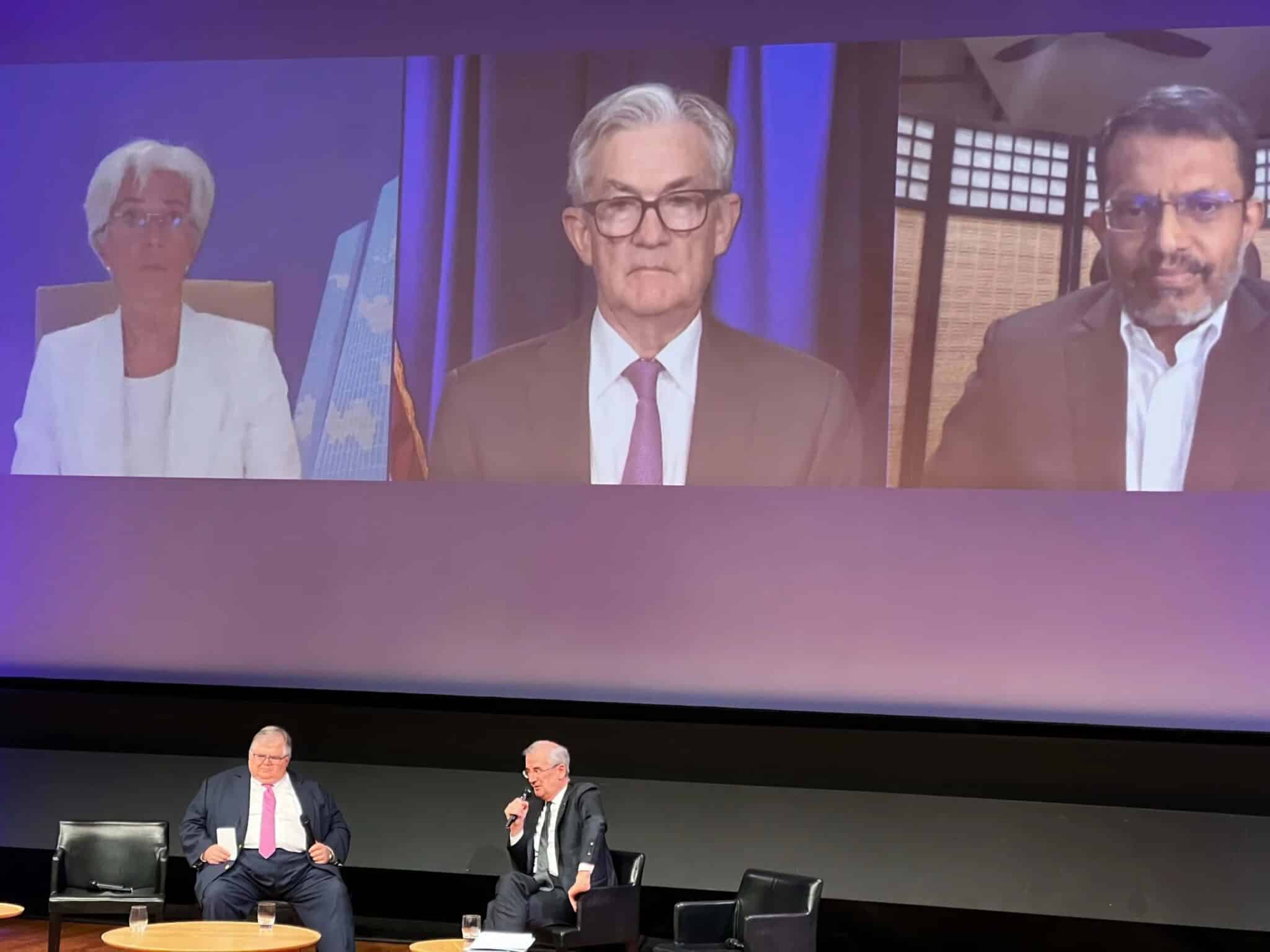The Banque de France held a conference yesterday on the “tokenisation of finance”, to discuss the place of crypto-currencies, decentralised finance (DeFi), and possible regulations. The President of the US Federal Reserve, Jerome Powell, and the President of the European Central Bank (ECB), Christine Lagarde, were both invited. What to take away from their speeches
Jerome Powell and Christine Lagarde speak out on cryptocurrencies
One of the angles of attack has been decentralised finance. The director of the Bank for International Settlements (BIS), Agustín Carstens, pointed to the lack of regulation regarding this sector. This would expose users to risks:
“DeFi applications facilitate borrowing, lending and trading, but intermediaries are also exposed to traditional risks such as liquidity, counterparty risks, leverage risks, and DeFi has no infrastructure in place to manage this. “
Jerome Powell and Christine Lagarde also agreed on the dangers they see in decentralised finance. The ECB President referred in particular to the repercussions of the Terra case:
This tool is now accepted by the PayPal, MasterCard and Visa of the world, and abuses have taken place – whether it’s Terra or Luna – and certainly by Mr. Do Kwon, who is currently on the run. “
A position shared by the Fed president, who points to “significant structural problems in the DeFi ecosystem, with conflicts of interest”. Jerome Powell also believes that the lack of transparency can be a major pitfall.
Hence an exhortation that came up again and again in the exchanges: more regulation is needed. According to Powell, “this situation is not going to last”, and the “DeFi Winter” that the ecosystem has experienced is proof of this need.

The conference panel
Central banks overwhelmed by dynamic ecosystem
Christine Lagarde and Jerome Powell in their speeches admitted that the explosion of the cryptocurrency sector was such that there was a real risk of being overwhelmed for central banks. The ECB President explained:
The world has been taken by surprise. […] We are now at the stage where between 10 and 15% of Americans and Europeans have actually invested in cryptos in 2021. “
A substantial share, which shows the hype around these new assets. Assets being the key word, as both Jerome Powell and Christine Lagarde refuse to call them “currencies”. According to the latter:
“Crypto-assets – not crypto-currencies – are purely speculative assets. […] Certainly not a means of payment, and not a very stable store of value. “
Same idea from Jerome Powell’s side, who pays lip service to the fact that “some of these crypto activities look like traditional financial activities”.
However, there is a certain concern, as both executives explain that it is necessary to keep up with the times in order not to be overtaken by these new systems.
Marking the role of central banks
Both Powell and Lagarde have said several times that the only currency you can really trust is a currency issued by a central bank. According to Jerome Powell, a good example is the stablecoin industry, which relies on the stability of fiat currencies:
The central bank is and always will be the primary source of confidence behind the currency. Stablecoins simply borrow that trust from the original issuer. “
The Fed Chairman and ECB President admit, however, that some uses may be of interest, with real innovations. Notably smart contracts, according to Jerome Powell:
There has been a paradigm shift, for example from intermediaries to smart contracts, to decentralised governance structures.
According to Christine Lagarde, it’s stablecoins that may actually be of interest and are “more promising” than other cryptocurrencies. But these advantages are sometimes superficial, according to the Fed president:
“In some cases these apparent efficiencies are only superficial, as lower costs are made possible by ignoring risks or appropriate levels of assets and liquidity. “
MNBCs as an answer
What then is the answer to these findings? Not surprisingly, it is the central bank digital currencies (CBDs) that are being put forward. Christine Lagarde confirms that institutions feel a strong demand “for digital payments”, and that it is crucial to meet this demand in order for central banks to maintain their anchoring role.
And that may be through blockchain technology, if it proves appropriate:
“If commercial banks […] feel that distributed ledger technology should be part of [the digital euro], then we will definitely be open to that. “
But this will take several years of analysis. The same is true of the US, where Jerome Powell expects a digital dollar to be available only after a long period of testing. Furthermore, both leaders confirmed that neither the euro nor the digital dollar would be anonymous. However, they point to attempts to preserve “privacy”.
Jerome Powell also explained that the release of FedNow, a new interbank payment system, could help overcome the limitations of SWIFT in the US. He points out that until then, the question is whether stablecoins should be used more widely, beyond crypto platforms.
What to take away from these talks
What we will retain from these interventions is that central banks seem to be aware of their delay in terms of taking into account blockchain technologies. Stablecoins in particular, which are developed and distributed in a particularly flexible way, seem to worry institutions that have to take years to develop similar projects.
The arrival of more regulation will come as no surprise to anyone, but this admission of weakness by central banks can be seen as evidence that crypto-currencies have definitely found their niche, and are now seen as plausible alternatives to fiat currencies.
Images: Brookings Institution via Flickr (CC BY-NC-ND 2.0) Presidency of the Republic of Benin via Flickr (CC BY-NC-ND 2.0)
